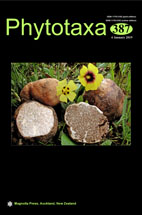Abstract
The Amazon region contains a great diversity of species, and the Amazon River basin accounts for almost 20% of all the freshwater in the world. Despite the favorable environmental conditions in this region, little is known about the cyanobacterial diversity of this waterbody, especially at the mouth of the river. In this paper, we used the polyphasic approach to identify 14 cyanobacterial strains isolated in the Amazon River on the inlet site from a drinking water supply located close to the river mouth. The isolated strains were characterized based on morphology, behavior in culture, 16S rRNA gene sequencing, phylogenetic analysis and potential for toxin production. The isolated strains belong to seven different genera, namely, Alkalinema, Cephalothrix, Limnothrix, Leptolyngbya, Phormidium, Pseudanabaena and an unidentified Nostocales taxa that may represent a new genus. Strikingly, there were no new species, nor detection of gene clusters associated with cyanotoxin production. However, the phylogenetic placements of the Amazonian strains of Limnothrix and Pseudanabaena provide new insight into the taxonomy of these genera, reinforcing the need for taxonomic revision.

